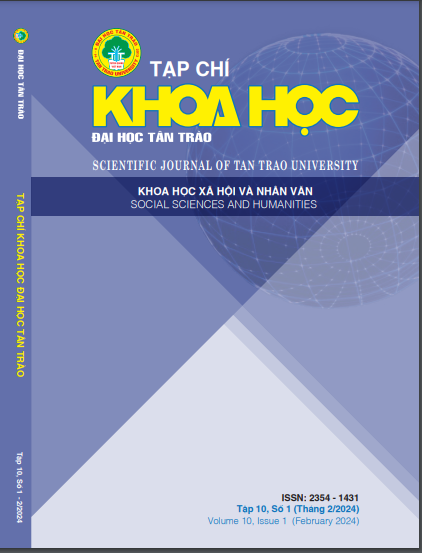DESIGNING DANCE COMPILING TECHNIQUES FOR CHILDREN - A STUDY AT PRESCHOOLS IN HUE CITY
DOI:
https://doi.org/10.51453/2354-1431/2024/1090Keywords:
dance, choreography techniques, dance composition, preschool children, Hue cityAbstract
Choreographing/Dance compiling for children is an essential work undertaken by teachers in preschools. Equipping teachers with knowledge and skills in choreography/dance composition contributes great significance and benefits to the teaching and cultural performance in their workplace. Using practical case studies and research on dance choreography for children in preschools in Hue city, in this article, we propose a novel framework in generating qualified dance performance for children to provide an updated and important guidance for teachers in the preparation and performance of well-structured and quality dances.
Downloads
References
Anne, B.L. & Tarin, C.L (1982). The Intimate Act of Choreography. University of Pittsburgh Press.
Benjamin Tom (2017). Dance Composition: A Practical Guide to Creative Success in Dance Making. Routledge.
Burrows, Jonathan (2010). A Choreographer’s Handbook. Routledge.
Le Ngoc Canh (2009). Phương pháp đạo diễn chương trình nghệ thuật tổng hợp. Nxb Văn hóa Thông tin.
Cerny Minton, Sandra (2015). Choreography: A Basic Approach Using Improvisation. Human Kinetics.
Hoang Cong Dung & Chinh, Tran (2016). Organizing preschool children to move to music and illustrate dances according to themes. Vietnam Education Publishing House.
Dinh Xuan Dai (2007). Dance and methods of teaching children to move to music. Hanoi Publishing House.
Le Xuan Hong (2002). Art education for preschool children. Women’s Publishing House.
Le Trong Quang (2000). Some basic understanding of dance composition. Hanoi University of Culture Publishing House.
Tran Minh Tri (1999). Dance and methods of teaching children to move to music. Education Publishing House.
Tran Minh Tri (2005, 2007). Dance Volume 1,2. Pedagogical University Publishing House.
Downloads
Published
How to Cite
Issue
Section
License

This work is licensed under a Creative Commons Attribution-ShareAlike 4.0 International License.
All articles published in SJTTU are licensed under a Creative Commons Attribution-ShareAlike 4.0 International (CC BY-SA) license. This means anyone is free to copy, transform, or redistribute articles for any lawful purpose in any medium, provided they give appropriate attribution to the original author(s) and SJTTU, link to the license, indicate if changes were made, and redistribute any derivative work under the same license.
Copyright on articles is retained by the respective author(s), without restrictions. A non-exclusive license is granted to SJTTU to publish the article and identify itself as its original publisher, along with the commercial right to include the article in a hardcopy issue for sale to libraries and individuals.
Although the conditions of the CC BY-SA license don't apply to authors (as the copyright holder of your article, you have no restrictions on your rights), by submitting to SJTTU, authors recognize the rights of readers, and must grant any third party the right to use their article to the extent provided by the license.


